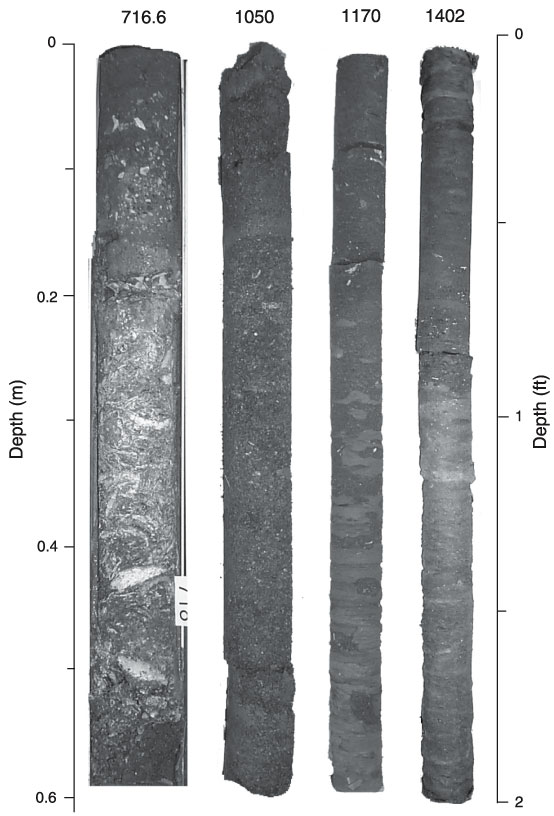Figure F11. Photographs of sequence boundaries from the Miocene (718.4 ft; 218.97 m), Oligocene (1050.5 ft; 320.19 m), Eocene/Oligocene boundary (1171.5 ft; 357.07 m), and Eocene (1402.9 ft; 427.60 m). Miocene sequence boundaries tend to feature large shifts in facies with clays or highstand quartz sands below and sandy shell beds above. Oligocene sequence boundaries are often subtle with clayey glauconite sands below and glauconitic sandy clay above. The Eocene/Oligocene boundary features large facies changes from outer neritic clays below to inner neritic glauconite sandy clays above. Note the extensive burrowing that has taken place across the sequence boundary. Eocene sequence boundaries generally consist of clays on top of clays with a thin glauconite-rich layer at the base of the sequence.

![]()